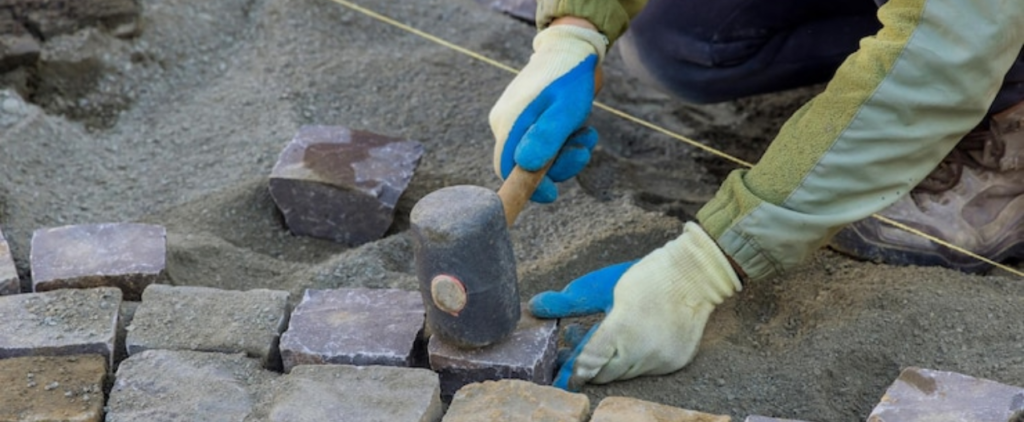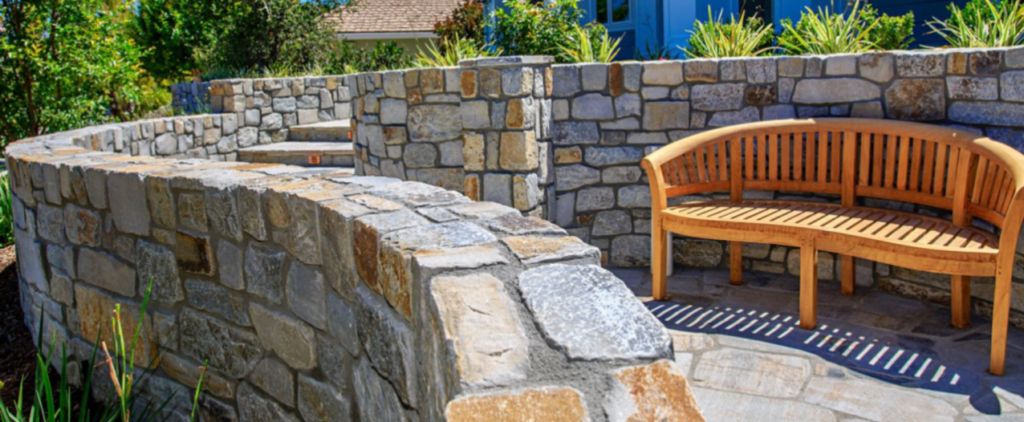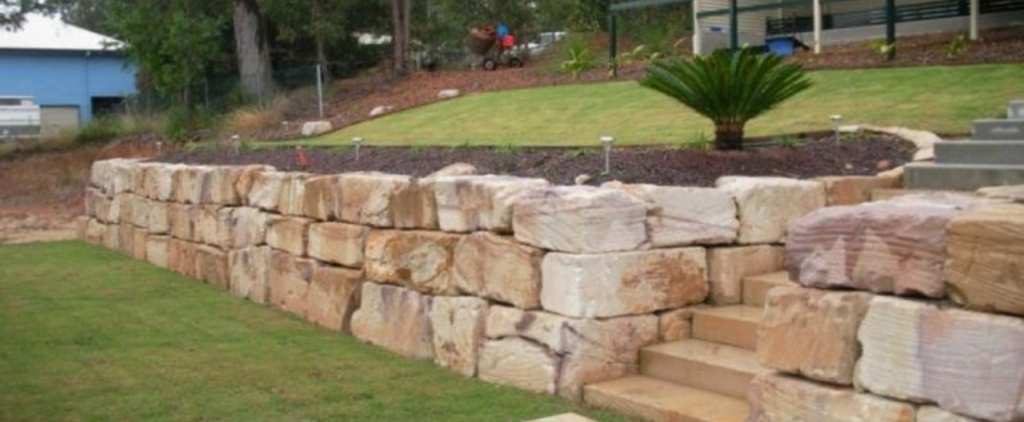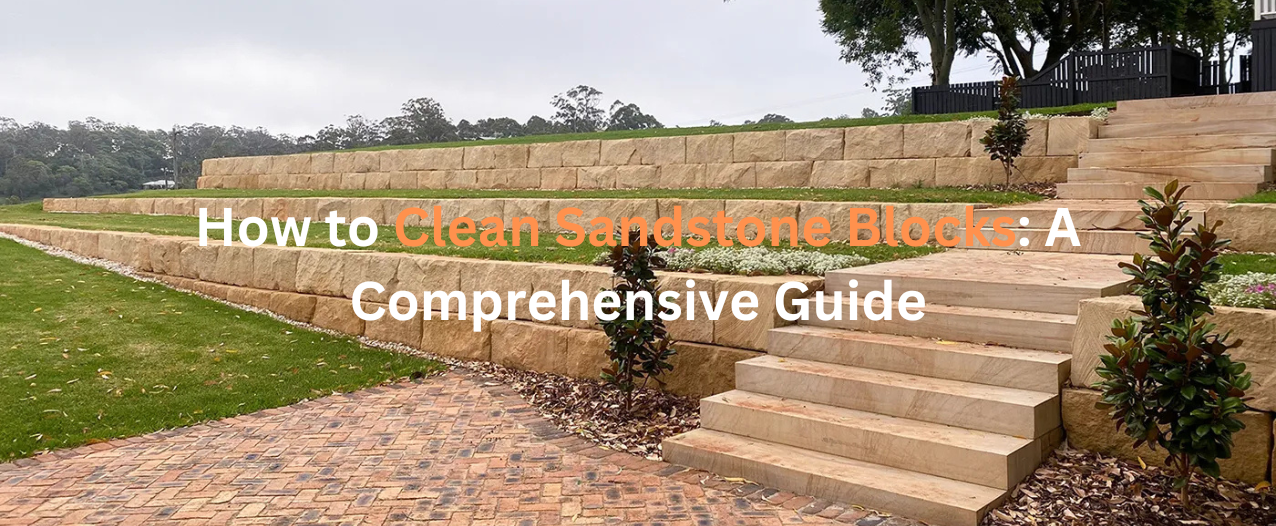Sandstone, a common material with a variety of uses, is frequently a popular option among people. Homes, gardens, and outdoor areas are all made more exquisite by their inherent beauty.
However, in order to preserve its beauty for many years to come, sandstone requires adequate maintenance, just like any other stone. Thus, it is advisable to clean it when needed to maintain its durability, regardless of whether you are cleaning a patio or a garden walk.
But right now, you may be wondering how to clean sandstone blocks, but don’t worry. Our purpose is to give you a thorough, time-efficient instruction on how to clean sandstone. Let’s begin, then.
What is Sandstone?

Let’s take a moment to define sandstone before we begin on our “How to clean sandstone” part. Sandstone is essentially a sedimentary rock made up of rock fragments or mineral particles the size of sand.
Its aesthetically pleasing and long-lasting qualities come from the gradual compression of sand, minerals, and organic compounds. Also, its broad color spectrum, which includes tan, brown, pink, red, and green makes it a flexible option for architects and homeowners.
Read Also – The Environmental Benefits of Choosing Sandstone Edging
Characteristics of Sandstone:
Now let’s see some of the characteristics that sets this sandstone apart. Here are they:
- Durability: Durability is one of the best characteristics of sandstone. It can withstand a range of weather conditions, which makes it ideal for outdoor and indoor use.
- Natural Texture: One factor that everyone looks after is its appealing texture. This natural stone is more aesthetically pleasing because of its natural texture.
- Versatile Application: What can be more pleasing for a homeowner if he/she can use this stone for a range of applications? It includes building, garden walls, flooring, and more.
Why You Should Use Sandstone For Your Space?
What’s the hurry of diving into “How to clean sandstone blocks” let’s just know why you should use sandstone for your space. Below are some of the points that will give you enough reasons to choose them. Here are they:
Aesthetic Appeal: The attractiveness of Sandstone further enriches it because different architects can be attracted by its timeless look. It can be arranged to complement both classic and modern aesthetics by virtue of its earthen hues and natural surfaces.
Eco-Friendly: The use of sandstone is eco-friendly since it is natural provided it was mined appropriately.
Durability: Sandstone can be used very well in any given environment and underneath structures because it can withstand weather elements and even temperature.
Slip Resistance: Sandstone edging and blocks are more suitable for use in areas such as patios and poolsides because they have a rough surface of the skin making them safer when wet.
Application: The sandstone is versatile and can be used for outdoor flooring such as patios, driveways, pathways, and garden features such as feature walls and edging, and can be used internally for sandstone walls.
Read Also – Building Strong and Stylish Retaining Walls with Railway Sleepers
How To Clean Sandstone Blocks?

Although cleaning sandstone blocks might seem like a difficult undertaking, with the correct technique, you can bring back your stone’s natural beauty without causing any harm to its fragile surface. Below are some of our cleaning techniques that will show you the path on your “How to clean sandstone blocks” journey.
Gather Your Cleaning Tools
Before starting the cleaning process, it’s essential to gather the necessary tools:
- Soft-bristle brush or broom
- Bucket
- Mild detergent (pH-neutral cleaner)
- A garden hose or a bucket of clean water
- Sponge or soft cloth
- Pressure washer (optional, but use carefully)
Start With Dry Brushing
To begin, remove any loose dirt, debris, or leaves from the sandstone’s surface by sweeping or brushing it. This is the initial step of “How to clean sandstone blocks” that will prevent the dirt from being driven into the stone’s pores when water is added.
Wash With Soapy Water
Next, mix warm water and a mild, pH-neutral detergent in a bucket. Using a sponge or soft cloth bathed in soapy water, gently scrub the surface of the sandstone. Avoid using harsh chemicals as they may damage the stone. To remove dirt off outside stones, a garden hose might be useful.
Rinse With Clean Water
Washing of the sandstone should be carried out using fresh water after washing the structure. Also, ensure you wash away any soapy deposit since it might attract dirt onto the surface with time.
Make a point to start from the head of the pipe and move downwards so that the water washes the surface and the dirt away together.
Spot Clean Stains
Chemical-born stains such as mildew moss or algae will not be easy to deal with and may need a little more work. It is recommended to have these stains washed with diluted bleach and water solution which is 1:10.
Rub the stains using a soft bristle brush after applying the solution to the fabric for 5 – 10 minutes. Make sure you rinse the area well afterward so that you don’t remain with bleach stains.
Read Also – Things to Know While Using Outdoor Sandstone Pavers For Your Residence
Using a Pressure Washer (With Caution)
Sandstone capping or stones outside may be cleaned with a power washer, but use it carefully. Too much pressure might erode or damage the stone’s surface. When spraying the stone, keep a safe distance away from it and use a pressure washer set to low.
Allow It to Dry
After cleaning, let the sandstone to completely dry. Sandstone may turn darker while wet, but it will revert to its natural color once it dries. Make careful to clean on a bright day to expedite drying.
Sealing Sandstone
You may need to use a stone sealer to avoid cases of staining or to reduce the rate at which the stones used to make the sandstone deteriorate. In turn, a high-quality sealer has to help the stone resist stains, moisture, and debris to enhance later cleaning.
All in all, the only thing that you need to make sure about is to make sure that the sealer that you choose is specially intended for sandstone.
Looking For a Sandstone Provider?

Come see Maroota Sandstone now. Our premium, ethically sourced materials are the ideal starting point for your ideal outdoor retreat. So, to start your landscaping journey, browse our website now and delve into the world of sandstone and concrete block retaining walls.
Closing Curtain
As we have come to the end of the blog, now you might know that cleaning a sandstone block isn’t as difficult as it seems. In this “How to Clean Sandstone blocks” guide, we have equipped you with enough knowledge to maintain your sandstone.
By following the above-discussed steps you can enjoy the beauty and benefits of this natural stone for years to come. Additionally, don’t be afraid to contact us, Maroota Sandstone, to get a reliable sandstone supplier.
FAQ’s
How do you clean sandstone blocks?
Ans: Gently scrub with a mild detergent and warm water, avoiding harsh chemicals.
What is the best way to clean sandstone slabs?
Ans: Regular dusting and occasional cleaning with a mild stone cleaner are recommended.
What is the best way to clean sandstone countertops?
Ans: Use a soft cloth and a mild detergent to clean sandstone countertops. Avoid harsh abrasive cleaners.
How to clean a natural sandstone wall?
Ans: Gently brush away dust and dirt, and use a mild stone cleaner for deeper cleaning.
Can you use vinegar to clean sandstone?
Ans: No, vinegar can etch the surface of sandstone. Avoid using acidic cleaners.




